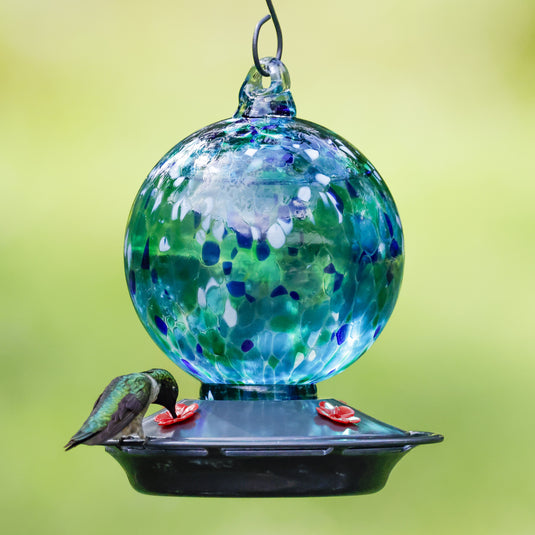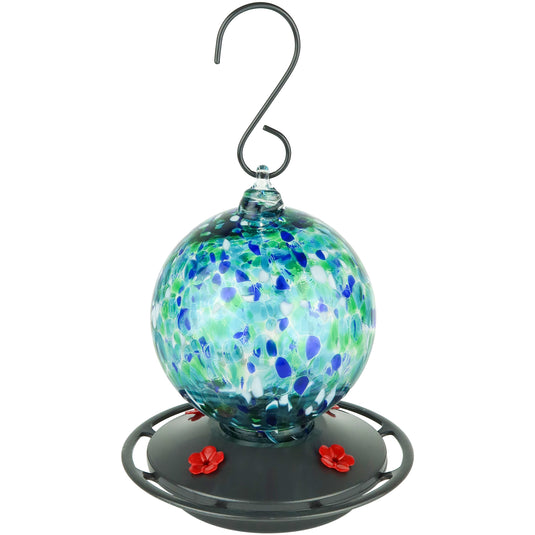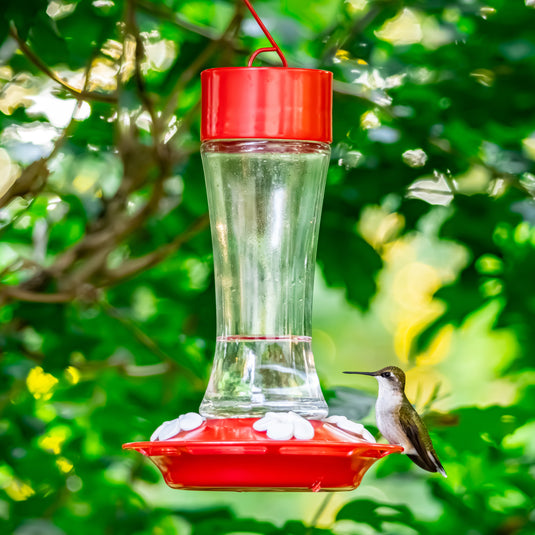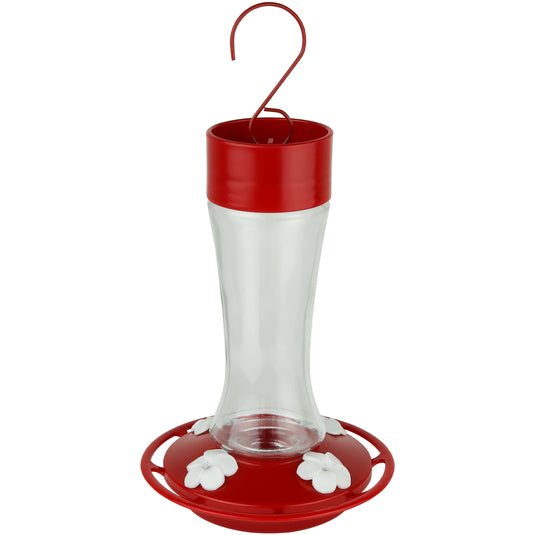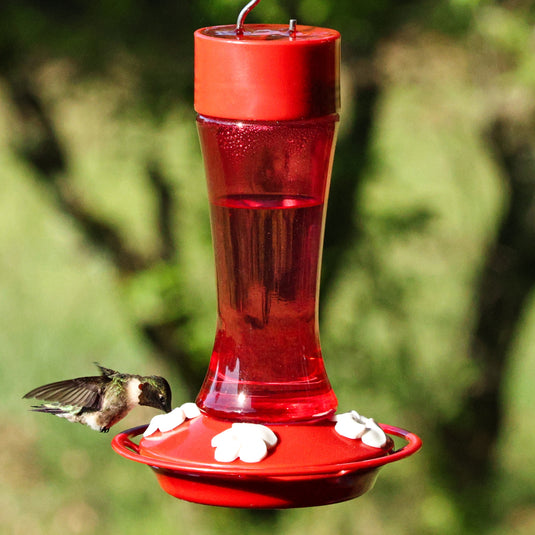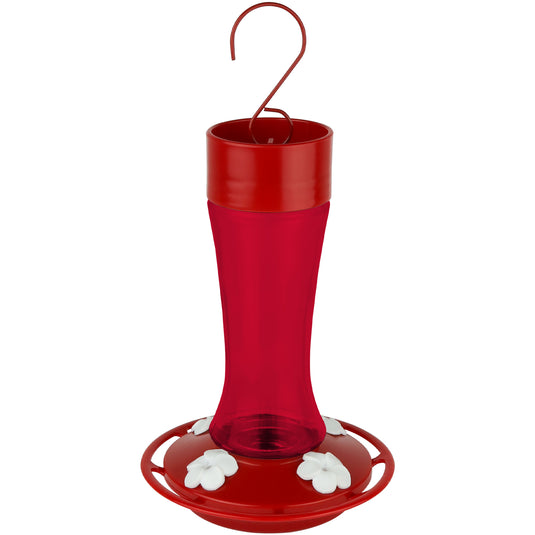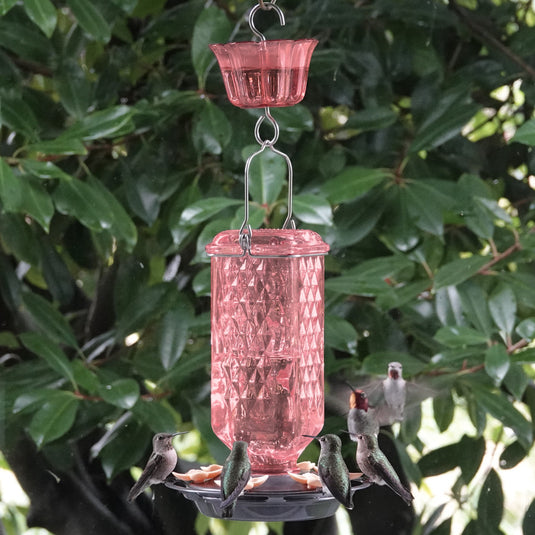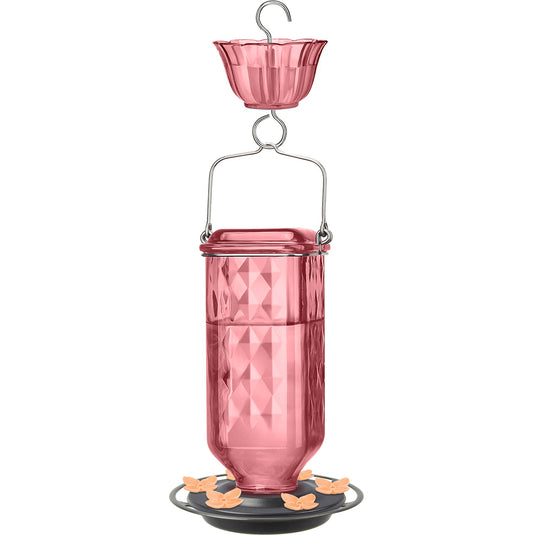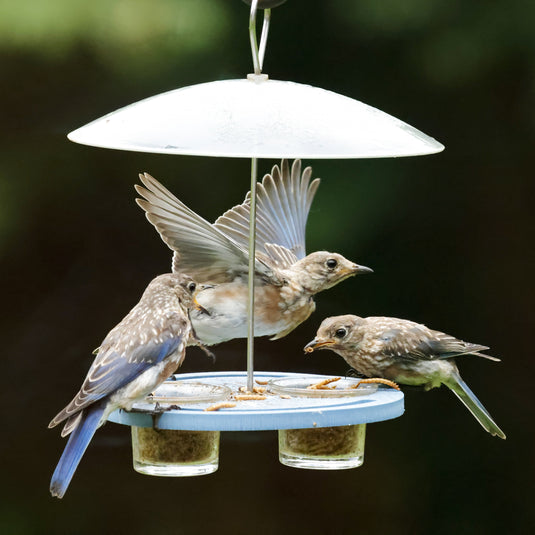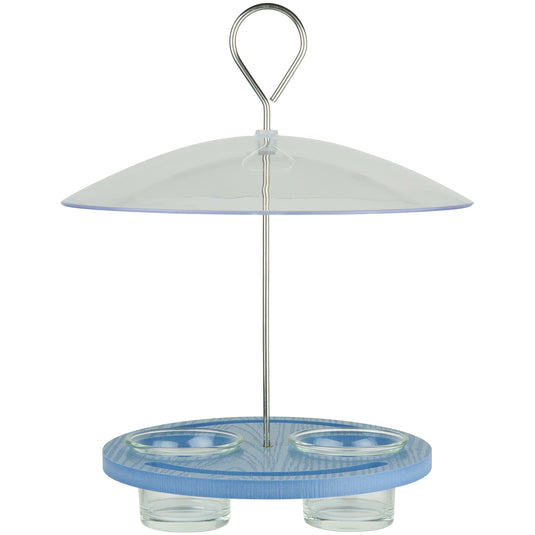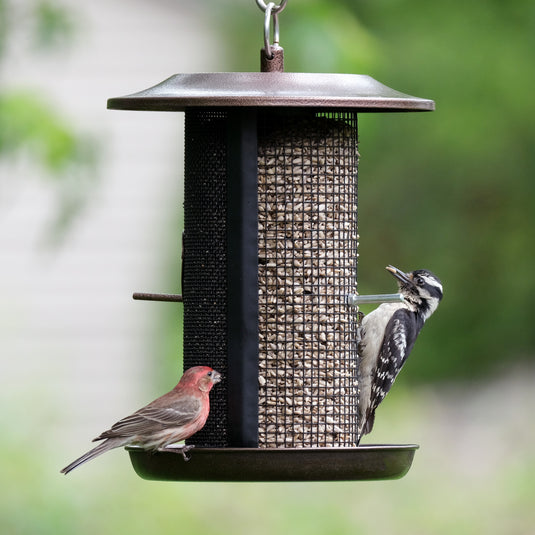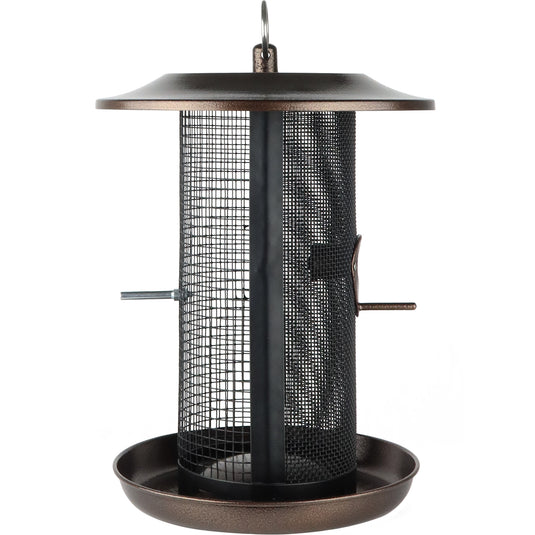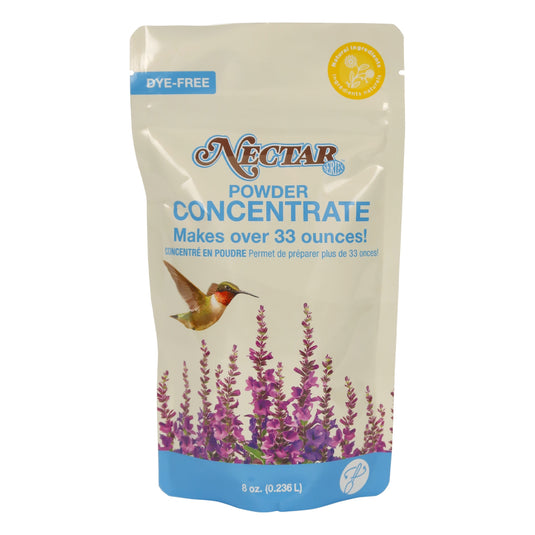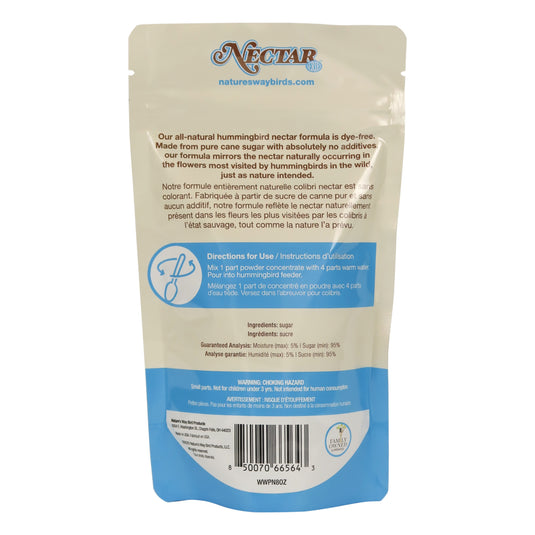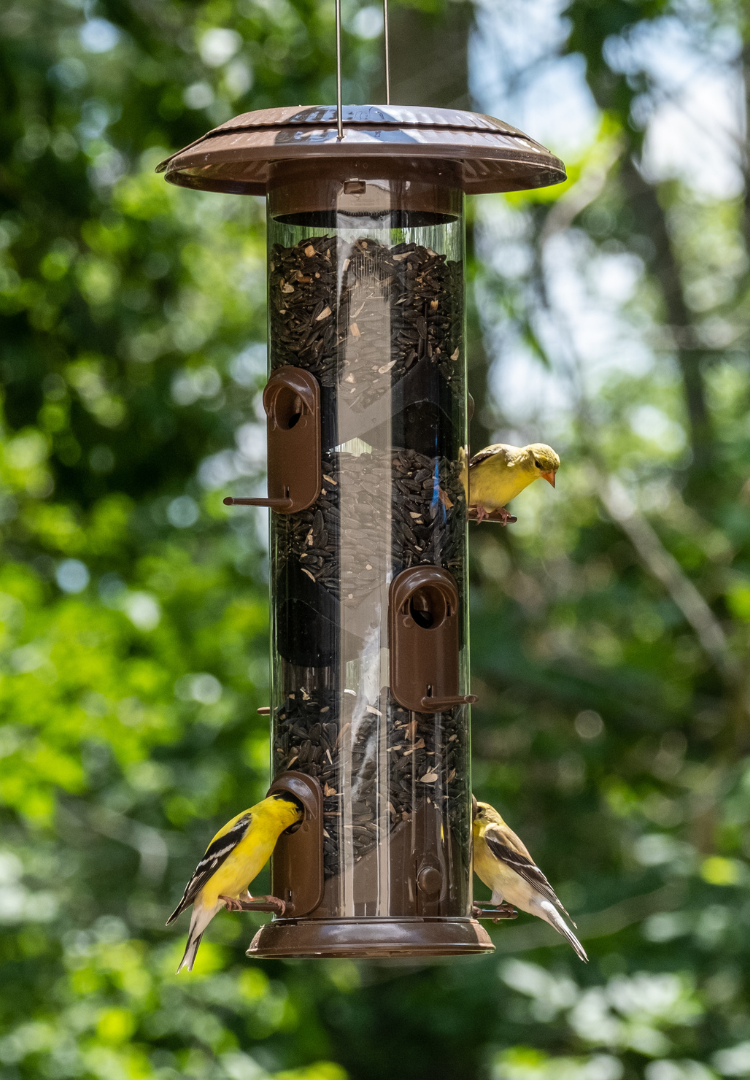Typically beginning around September, migratory songbirds will begin making their trip down south to locations with better resources through the winter. As they journey to their destinations, they’ll make stops along the way for food and rest, making your bird feeders busier with more travelers instead of regulars. Having feeders stocked and ready can help make your yard busy with birds and provide you with a fun and rewarding birdwatching experience this fall!
Pro tip: As with any migration season, it’s important to keep your bird feeders clean to avoid spreading diseases among birds. During fall migration, increase the frequency of your feeder cleanings to keep your backyard flocks healthy.
In general, it’s best to look for bird feeders that have these features:
- Easy to clean
- Easy to fill
- Large capacity
- Attracts a wide variety of birds
- Squirrel resistant (if squirrels are an issue in your yard)
- Bee and ant resistant (if feeding nectar)
Skip to section
Hummingbird feeders
Suet bird feeders
Squirrel proof bird feeders
Hopper bird feeders
Platform bird feeders
Tube bird feeders
Hummingbird feeders
You might not think of fall as the best time to be feeding the hummingbirds, but these tiny travelers need a lot of energy to migrate south for the winter! If you already have an established feeder in your yard, don’t be afraid to replace it with a new one in the fall, or keep the old one in a nearby location. Once a feeding location is established, hummingbirds learn to seek out this rich food even if the location or appearance of the feeder is changed.
When it comes to the best color hummingbird feeder, the most traditional color for hummingbird feeders is red. However, researchers have proven that hummingbirds are attracted to a variety of colors. So don’t let color be a factor in your decision other than your own personal preference!
As resources dwindle due to colder weather, pests like bees and ants can become more aggressive in their search for food. Choosing a hummingbird feeder with a dome-shaped base can help deter bees while keeping sufficient space for the hummingbird’s tongue to reach the nectar - did you know that a hummingbird’s tongue can stretch twice the length of its beak? Many hummingbird feeders have built-in ant moats, which trap ants in a small cup of water before they have the opportunity to reach the feeder. Even if the feeder you choose doesn’t have a built-in ant moat, one can be purchased and installed separately if needed.
One of the most important features to look for in a hummingbird feeder is the ability to clean it thoroughly. It is inevitable that sugar water will eventually break down and cause mold, fungus, or other harmful bacteria to grow inside of a hummingbird feeder. To prevent mold growth, hummingbird feeders need to be cleaned frequently - at least every 4-5 days. Since you’ll be cleaning it often, make sure that your hummingbird feeder has removable parts that are easy to clean. Some feeders are even dishwasher safe!
We recommend having your hummingbird feeders out and filled with homemade nectar until about 2 weeks after you see your last hummingbird. This will help feed any latecomers on their way south.
Still not sure which hummingbird feeder is best for you? Use our hummingbird feeder selector and answer a few quick questions to get personalized results just for you!
Suet feeders
Suet is a high-energy food source that can provide much needed nutrition to prepare for fall migration. Plus, many birds that eat insects to round out their diets will eat suet in the fall and winter months to fill the void when the insects they typically feed on are not plentiful. You can attract a wide range of birds with suet including Woodpeckers, Titmice, Chickadees, and Nuthatches. To accommodate larger birds like woodpeckers, some suet feeders are elongated into a tail-prop design, allowing them to balance their body weight by placing their tail against the feeder. If nuisance birds like starlings and grackles are a known problem in your yard, try an upside-down style suet feeder to detract them.
Squirrel proof bird feeders
Squirrels are the most active in the spring and fall seasons when they are in search of food. If you know that squirrels are a problem in your yard, choosing a bird feeder with squirrel-resistant features will help keep these feeder pests at bay. Look for a feeder with a locking roof, collapsible perches, or a seed shield that will make it harder for squirrels to reach the seed inside.
Remember, the most important squirrel proofing step you can take is proper feeder placement. If a squirrel is able to reach over from a nearby foothold and avoid placing any weight on the feeder, it may be able to access the bird seed. To overcome this problem, allow for at least 18 inches/47 cm of clearance around the feeder. This will force the squirrel to climb or jump onto the feeder and cause the perches to collapse under the weight.
You may also choose to feed the squirrels and other wildlife by placing a corn feeder near the woods or in a separate designated location away from the bird feeders. Many bird enthusiasts are successful with luring wildlife to that location and keeping those unwanted critters off the feeders intended for the birds.
Hopper bird feeders
Larger hopper bird feeders are a good choice for the fall since they can accommodate a variety of small and large birds while giving you the option to feed seed and suet in one feeder. Look for a hopper feeder that has a wide opening for easy filling, removeable parts for thorough cleaning, and a large capacity for less frequent filling. It’s important to make sure your feeder has a seed tray with good water drainage to keep your bird seed fresh.
Platform bird feeders
Platform feeders are an excellent choice for any birder who wants to attract the widest variety of birds with virtually any type of seed. The open design of this feeder allows many birds of multiple sizes to feed at once, making for a busy and exciting experience – especially in the fall when birds are migrating and plentiful! The most important features to look for in a platform feeder are good drainage and quality materials. Choose a platform feeder with hardware that won’t rust and materials that are resistant to rot and insects. A removeable tray with perforations for drainage will allow water to drain and air to flow while making it easy to keep clean.
Tube bird feeders
If you’re looking to feed medium and small sized birds, a tube feeder might be the right choice for you. To maximize your bird viewing, look for a tube feeder that has a lot of perches and even-feed baffles that keep a constant seed level at all seed ports. Feeders with a wide funneled opening and a large seed capacity will make for less frequent and easy fillings. For specifically feeding finches, you may choose a mesh feeder or replace the regular seed ports with thistle inserts, which come included with every Nature’s Way tube feeder.
Related articles
How to prepare for fall migration






